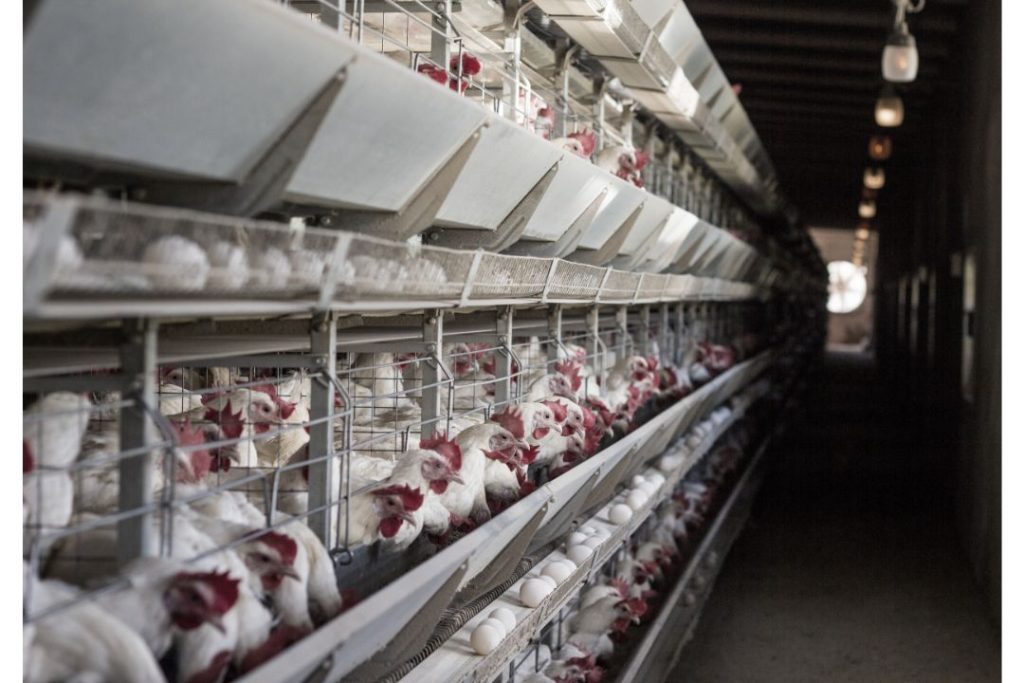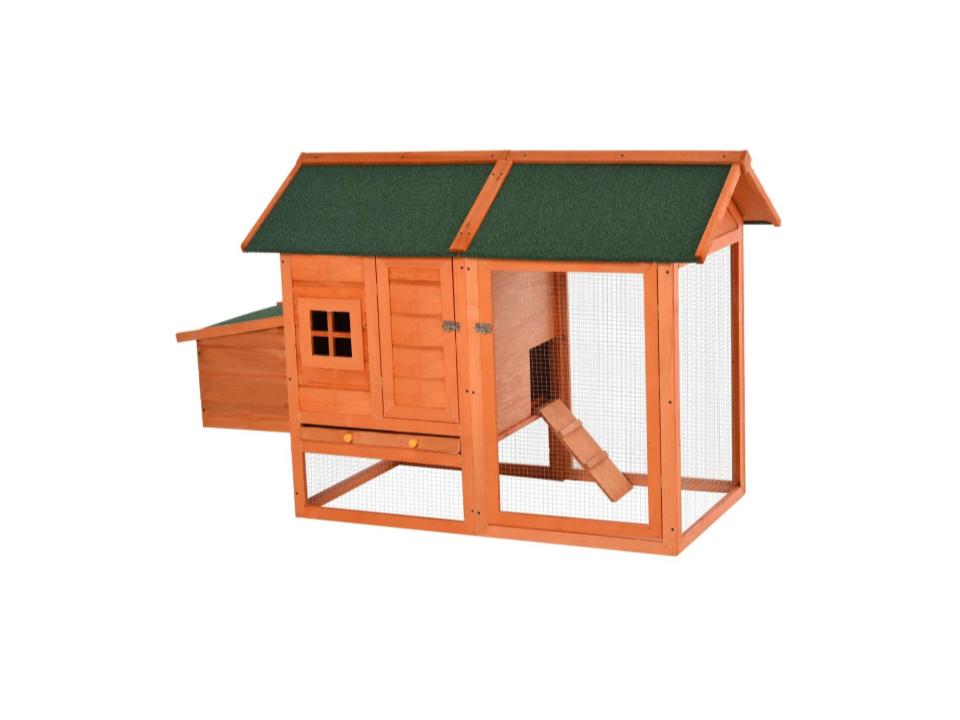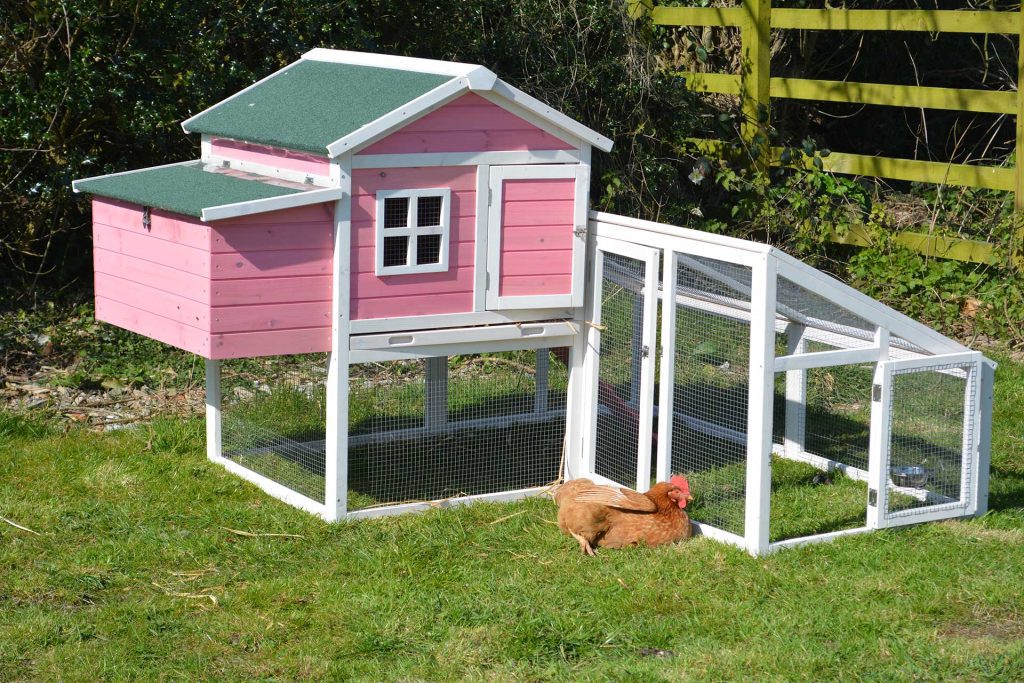Raising chickens is both an art and a science. New poultry enthusiasts often ask, “How far apart should roosting bars be?” This seemingly simple question is pivotal to ensuring the comfort and health of your flock.
The optimal distance between roosting bars should be 12 to 18 inches. This spacing ensures that chickens have enough room to perch without overcrowding comfortably. This specific distance has been determined based on a chicken’s average size and spread when it straddles.
Proper spacing allows chickens to perch comfortably and reduces the chances of territorial disputes or aggressive behaviour.
Furthermore, with this optimal distance, there’s less likelihood of droppings accumulating in one concentrated area, promoting better hygiene within the coop. Maintaining this 12 to 18-inch spacing ensures a harmonious and healthy environment for your flock.
In this article, we’ll discuss the details of chicken roosting, addressing age, habits, and the ideal coop setup. So, lets start”
What is Chicken Roosting?
Roosting is the natural behavior of chickens to perch on an elevated bar or branch, typically during the night. This instinctual act protects them from ground predators and gives them a cozy resting spot.
Roosting defines a chicken’s instinct to seek high ground. Elevated perches offer them nighttime sanctuary. Chickens gravitate towards these spots when dusk approaches. Safety and comfort drive this behavior. Ground predators pose less threat to elevated chickens. Perches provide a vantage point for these birds. Nighttime sees them huddled together, seeking warmth.
Elevated bars, branches, or platforms serve as roosts. Natural materials like wood are often preferred. Chickens’ feet grasp these surfaces easily. A good grip ensures they won’t fall during sleep. Roosting also promotes social hierarchy among the flock. Dominant hens often choose the highest spots. Subordinate ones take lower positions or ground level.
Roosting isn’t just about safety. It’s about comfort, too. Elevated positions offer better ventilation. Fresh air circulates them, preventing respiratory issues. Droppings fall directly to the ground, ensuring cleanliness. Clean environments reduce the risk of diseases.
Roosting bars differ in materials and designs. Some farmers use simple wooden bars. Others might opt for more elaborate setups. The key is to ensure stability and comfort. Chickens need to feel secure on their perches. A wobbly roost can stress the birds. Stress in chickens can reduce egg production.
Observing roosting can offer insights into chicken health. Active roosters indicate a healthy flock. Chickens avoiding the roost might be sick. Regular checks during roosting hours are advisable.
At What Age Do Chickens Start Roosting?
Chickens begin showing roosting tendencies as early as 3 to 5 weeks old. However, they might not consistently roost until they’re a bit older, around 8 to 12 weeks.
Roosting is a natural behaviour in chickens. Young chicks exhibit this instinct from an early age. Between 3 to 5 weeks, you’ll notice some changes. They might attempt to perch on elevated surfaces. These could be the edges of their brooder or low branches.
But why do chickens roost? Safety is a primary reason. In the wild, birds roost to stay away from predators. Elevated positions offer them a better vantage point. It also keeps them off the ground, away from nocturnal threats. Comfort is another factor. Roosting bars provide a place for chickens to relax. They can settle down, fluff their feathers, and enjoy a good night’s sleep.
Early Signs of Roosting
From the tender age of 3 to 5 weeks, young chicks begin to display their innate roosting instincts. These fledgling attempts often involve perching on available surfaces, such as the edges of their brooders or any low-hanging branches nearby.
The Importance of Roosting
Roosting isn’t just a random behavior; it’s rooted in survival. The primary reason chickens roost is for safety. In the wild, elevated positions shield them from ground-based predators and offer a panoramic view of potential threats.
Beyond safety, roosting also serves a comfort function. It’s a time when chickens can settle, fluff their feathers, and get a restful night’s sleep away from the disturbances of the ground.
The Transition to Consistent Roosting
As the chicks mature into their 8th to 12th weeks, their roosting habits become more defined and consistent. This transition can be attributed to their physical development. As pullets (young hens) and cockerels (young roosters) grow, their bodies become more robust, and their feet are better equipped to grip onto roosting bars securely.
What Factors Influencing Roosting?
Just as humans have varied habits, so do chickens. Some might be early roosters, while others might take more time. Factors like breed can play a significant role. For instance, heavier breeds might find their roosting rhythm a tad later than their lighter counterparts.
Chickens might hesitate to roost there if the roosting area is too high, unstable, or uncomfortable.
Diverse Chicken Personalities
Chickens, like humans, exhibit varied behaviors. Early roosters exist, as do late bloomers. Breed often dictates these tendencies. Heavier chicken breeds tend to roost later compared to lighter ones. For example, a Brahma might take longer than a Leghorn to start roosting.
Breed Specifics Matter
Certain breeds have distinct roosting patterns. Bantams, being small, often roost earlier. In contrast, larger species like Orpingtons might delay. Genetics plays a role in determining roosting timelines.
Surroundings deeply influence Environmental Impact Roosting habits
An optimal environment encourages consistent roosting. Chickens prefer stable, comfortable spots. High or wobbly perches deter them from roosting.
Comfort is Key
A chicken’s comfort level directly impacts its roosting pattern. Soft, wide roosting bars appeal more. Narrow or hard surfaces can be off-putting, leading to irregular roosting.
Safety Concerns
Chickens instinctively seek safety. Perches that seem insecure or unstable can be a concern. Secure, well-placed roosting bars encourage regular roosting habits.
Height Considerations
The height of the roosting area matters. While some chickens love high spots, others prefer mid-level or lower perches. Observing individual preferences helps in setting up the right roosting environment.
Weather and Climate
Weather conditions can sway roosting behaviors. In colder climates, chickens might seek lower, warmer spots. Conversely, higher perches might be favoured for better ventilation during warmer months.
Space and Crowding
Overcrowding can disrupt roosting. Chickens need personal space on their perches. Ensuring ample space for each bird is crucial for consistent roosting.
Social Dynamics
Chickens have a pecking order. Dominant birds often claim the best roosting spots. Flock dynamics help in predicting and influencing roosting patterns.
Predator Threat
Perceived threats from predators can alter roosting habits. Chickens will avoid spots where they feel vulnerable. Ensuring a secure coop and roosting area is essential for their peace of mind.
Lighting Conditions
Chickens have a natural inclination towards dimly lit areas for roosting. Bright lights can deter them from their preferred spots. Proper coop lighting plays a role in fostering consistent roosting.
What Are the Strategies to Encourage Roosting?
Crafting the right environment is paramount. This includes installing proper roosting bars that are wide enough for their feet. Using 2x4s with the broader side facing up can be an ideal choice.
- Prioritize Cleanliness: Chickens, by nature, gravitate towards clean areas. Ensuring the roosting space is dirt-free and pests like mites will make it more appealing. Regular inspections and cleaning routines can help maintain this cleanliness.
- Ensure Adequate Space: Overcrowding can be a deterrent for chickens looking to roost. To avoid this, ensure that each chicken has about 8-10 inches of space on the roosting bar.
- Temperature Considerations: Chickens’ roosting habits can be influenced by temperature. In colder settings, they might huddle together on lower perches for warmth. Ensuring the coop is well-insulated can make a significant difference.
- Lighting Preferences: Dimly lit or dark areas are preferred by chickens for roosting. It’s advisable to position roosting bars away from direct, bright lights to create a conducive environment for them to rest.
How Far Apart Should Roosting Bars Be?
The optimal distance between roosting bars is 12 to 18 inches. This spacing ensures that chickens have enough room to perch without overcrowding comfortably.
Roosting bar spacing is a blend of science and art. It’s about your chicken’s needs and making adjustments as required. Proper spacing promotes comfort, hygiene, and well-being, ensuring a thriving, happy flock.
Optimal Spacing
The recommended distance between roosting bars is 12 to 18 inches. This isn’t an arbitrary figure. It’s derived from observing chickens and understanding their spatial needs. Proper spacing ensures that each bird has its perch and prevents the negative effects of overcrowding, such as territorial disputes and stress.
Comfort and Space
Every chicken, regardless of its breed or size, values personal space. When chickens are cramped, they become stressed. A stressed chicken is more susceptible to diseases and might lay fewer eggs. By ensuring each bird has adequate space, you’re promoting a more relaxed and productive environment.
Hygiene Matters
Cleanliness is paramount in a coop. When bars are too close, droppings can accumulate, leading to unsanitary conditions. Moreover, chickens in close quarters are more likely to transmit parasites like lice or mites to one another. Properly spaced bars facilitate easier cleaning and minimize the risk of disease outbreaks.
Consider the Chicken Size
While the 12 to 18-inch rule is a good general guideline, it’s essential to consider the size of your chickens. Larger breeds, like the Jersey Giant, might require more space, while smaller bantams might be comfortable with slightly less. Observing your flock and making necessary adjustments ensures every bird is comfortable.
Level Bars for Peace
Chickens have a social hierarchy, often called the “pecking order.” If roosting bars are at different heights, chickens will compete for the top spot. Keeping bars level eliminates this competition, ensuring a more peaceful coop environment.
Material and Diameter
The material of the roosting bars plays a crucial role in chicken comfort. Wooden bars, being natural, are often preferred. They provide an excellent grip, reducing the chances of chickens slipping off. Additionally, a 2 to 3 inches diameter is optimal, allowing chickens to wrap their feet around comfortably.
Ventilation Benefits
Proper spacing between roosting bars ensures better air circulation. This can be the difference between a comfortable chicken and an overheated one during hot months. Conversely, while chickens might huddle together in colder months for warmth, they still need adequate ventilation to prevent respiratory issues.
Safety First
Spacing isn’t just about comfort; it’s about safety. Bars that are too close can lead to injuries as chickens jostle for space. Proper spacing ensures each chicken can roost without being pecked at or pushed off by its neighbors.
Ease of Maintenance
Well-spaced bars mean easier access for cleaning and maintenance. Whether scrubbing down bars, inspecting for damage, or making necessary repairs, having adequate space to work can make these tasks less cumbersome.
Observe and Adjust
Even with guidelines in place, it’s essential to observe your flock. Chickens will provide the best feedback on whether the spacing is right. If they roost without issues, you’ve hit the mark. Adjustments might be in order if they seem agitated or avoid the roost.
How Far Should Roosting Bar Be from Wall?
A roosting bar should be at least 12 inches away from the wall. This distance prevents chickens from soiling the wall and ensures they can easily hop onto the bar. The positioning of a roosting bar in relation to the wall is more than just about aesthetics.
Distance Matters
Positioning a roosting bar correctly is crucial for chicken comfort. A minimum of 12 inches higher bar from the wall is recommended. Such spacing prevents unwanted wall stains from chicken droppings.
Ease of Access
Chickens need space to hop onto the bar. Proper distance ensures they can jump without hindrance. Close proximity to the wall can deter them from using the roost.
Avoiding Wall Soiling
Chickens, while roosting, produce droppings. Keeping the bar away from the wall reduces splatter and staining. Clean walls contribute to a healthier coop environment.
Chickens fluff their feathers and move around while roosting. Adequate space prevents them from hurting themselves against the wall.
Ventilation Concerns
Good airflow is essential in a coop. Positioning the roosting bar away from the wall promotes better ventilation. It ensures that moisture doesn’t get trapped, reducing the risk of respiratory issues.
Pecking Order Dynamics
In a flock, dominant chickens claim prime roosting spots. A well-spaced bar allows for clearer pecking order establishment without wall interference.
Feathers can get damaged if chickens are squeezed between the bar and the wall. Proper spacing ensures feather health and reduces breakage.
Chickens might need to move or adjust during the night. A bar too close to the wall restricts these movements, causing discomfort.
Ease of Cleaning
Routine coop cleaning is essential. Bars positioned further from walls are easier to clean around. It also allows for thorough wall cleaning when necessary.
Roosting Bar Length
While discussing distance from the wall, the bar’s length is also vital. Longer bars, when placed adequately from walls, accommodate more chickens comfortably.
The diameter of the roosting bar plays a role in chicken comfort. A wider bar requires a bit more distance from the wall for optimal space.
Coop Design and Layout
Every coop is unique. While 12 inches is a general guideline, coop design might necessitate adjustments. Always prioritize chicken comfort and safety.
How High Should Roosting Bars Be in a Chicken Coop?
Roosting bars should be positioned 2 to 4 feet above the ground. However, for older or heavier breeds, a lower height might be more comfortable.
Height Basics: Finding the Sweet Spot
Roosting bars ideally sit 2 to 4 feet off the ground. Such elevation mimics natural perching instincts.
Safety and Security: Elevation Matters
Elevated roosting bars offer protection. Predators find it harder to reach higher perches. Chickens feel safer when elevated.
Comfort is Key: Adjusting for Age and Size
Older chickens prefer lower heights. Their joints might be less agile. Heavier breeds also benefit from accessibility. Consider a tiered design, offering multiple heights. This caters to all chickens in the coop.
Natural Instincts: Mimicking the Wild
In nature, chickens perch on tree branches. These are often elevated, away from ground threats. Coop designs should replicate this.
Temperature and Climate: Height Plays a Role
Warm air rises in the coop. Higher roosts can be warmer in cold climates. In hot weather, consider ventilation when positioning.
Accessibility: Ensuring Every Chicken Can Roost
Ramps or lower bars can assist older chickens. They ensure every bird has a roosting spot. Accessibility promotes coop harmony.
Space Utilization: Efficient Coop Design
Elevated roosting bars maximize ground space. Chickens have more room to move and forage below. Efficient design benefits the entire flock.
Maintenance and Cleaning: Elevation Helps
Higher roosts simplify cleaning tasks. Droppings fall clear of feeding and nesting areas. A cleaner coop means healthier chickens.
Observation: Monitoring Your Flock’s Preferences
Watch your chickens during the roosting time. Do they struggle to reach the bars? Adjustments might be necessary.
Flexibility: The Need for Adjustable Roosts
Adjustable roosting bars offer flexibility. As your flock grows or changes, so can the roost height. Flexibility ensures long-term coop success.
Frequently Asked Questions
How to Get Chickens to Sleep on Roost?
- Start Early: Introduce young chickens to roosting bars early on.
- Use Natural Materials: Chickens prefer natural materials like wood.
- Ensure Safety: Place bars away from drafty areas and potential threats.
- Consistent Lighting: Gradually dimming lights can signal bedtime.
When Do Chickens Start Sleeping on a Roost?
Most chickens will start sleeping on a roost between 8 to 12 weeks of age. However, some might take longer, especially if they’re not introduced to roosting bars early on.
Can a Chicken Have Chicks Without a Rooster?
No, hens cannot produce fertilized eggs without a rooster. They can lay eggs, but these won’t hatch into chicks.
Why is My Chicken Not Roosting?
Several factors can deter a chicken from roosting:
- Health Issues: Sick or injured chickens might avoid the roost.
- Bar Comfort: Ensure the roosting bar has the right diameter and material.
- Environmental Stress: Loud noises or predators can scare them off.
Final Word
The intricate details of poultry care extend far beyond mere feeding and health checks. One of the pivotal aspects that often gets overlooked yet holds immense importance is the design and layout of the coop. Specifically, the question of “how far apart should roosting bars be?” emerges as a central concern.
This isn’t a trivial detail; it directly impacts your flock’s comfort, safety, and overall well-being. Proper spacing ensures chickens have personal space, reducing stress and potential conflicts. It also plays a role in maintaining hygiene, as overcrowded roosts can lead to unsanitary conditions.
Moreover, the proper distance between roosting bars can prevent injuries and promote natural behavior, allowing chickens to exhibit their instinctual perching habits. In essence, by giving due attention to this aspect, poultry enthusiasts not only enhance the living conditions of their flock but also pave the way for a thriving coop environment.



